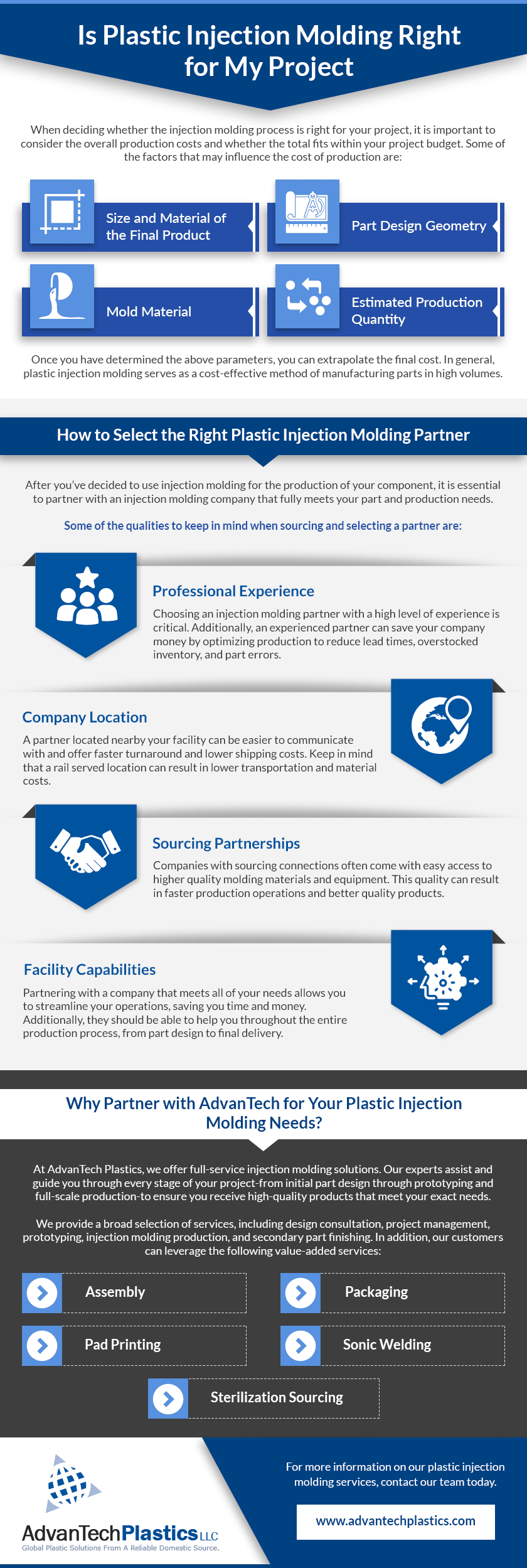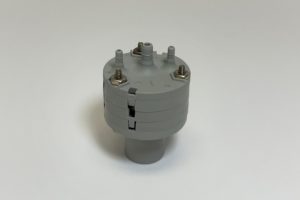Sonic welding, also known as ultrasonic welding, is another of AdvanTech Plastics specialties. A widely used joining technique in the plastic injection molding industry, sonic welding utilizes high-frequency ultrasonic vibrations to create a molecular bond between two plastic components. This method is particularly effective for thermoplastic materials, making it a popular choice in various industries, including automotive, medical, electronics, and consumer goods.
Sonic welding is employed to assemble or join plastic parts produced through injection molding. Here’s an overview of the key aspects:
1. Basic Principles:
- Ultrasonic Vibrations: Sonic welding uses ultrasonic vibrations typically in the range of 15 to 40 kHz. These vibrations are applied to the parts being joined.
- Generation of Heat: The friction resulting from the ultrasonic vibrations generates heat at the interface of the plastic components, causing them to melt and form a strong bond.
2. Equipment:
- Ultrasonic Welding Machines: These machines consist of a power supply, a converter, and a horn. The horn is directly in contact with the plastic parts and transmits the ultrasonic vibrations.
- Tooling: Customized tooling, such as horns and fixtures, is designed to match the specific geometry of the parts being welded.
3. Materials:
- Types of Plastics: Sonic welding is suitable for a wide range of thermoplastic materials, including but not limited to polyethylene, polypropylene, ABS, polycarbonate, and more.
- Compatibility: Material compatibility is crucial, and certain plastics with similar melting temperatures are more suitable for sonic welding.
4. Process Steps:
- Preparation: Parts are prepared, and joint surfaces are often designed with features to enhance the welding process.
- Clamping and Fixturing: Parts are securely clamped together, and fixturing ensures proper alignment during the welding process.
- Welding Cycle: The ultrasonic vibrations are applied for a specific duration, creating a molten layer at the joint interface. After the vibration stops, the plastic solidifies, forming a strong bond.
5. Advantages:
- Speed and Efficiency: Sonic welding is a fast process, contributing to high production rates.
- Strength and Integrity: Welded joints are often as strong as or stronger than the base material.
- Reduced Production Costs: The speed and efficiency of the process can lead to cost savings.
6. Applications:
- Sonic welding is widely used in the plastic injection molding industry for assembling components in products such as automotive assemblies, medical devices, electronic housings, and more.
Sonic welding offers several advantages, making it a valuable technique in plastic injection molding for creating reliable and durable assemblies. Its versatility and efficiency make it suitable for a wide range of applications where high-speed, precision joining of plastic components is essential.




